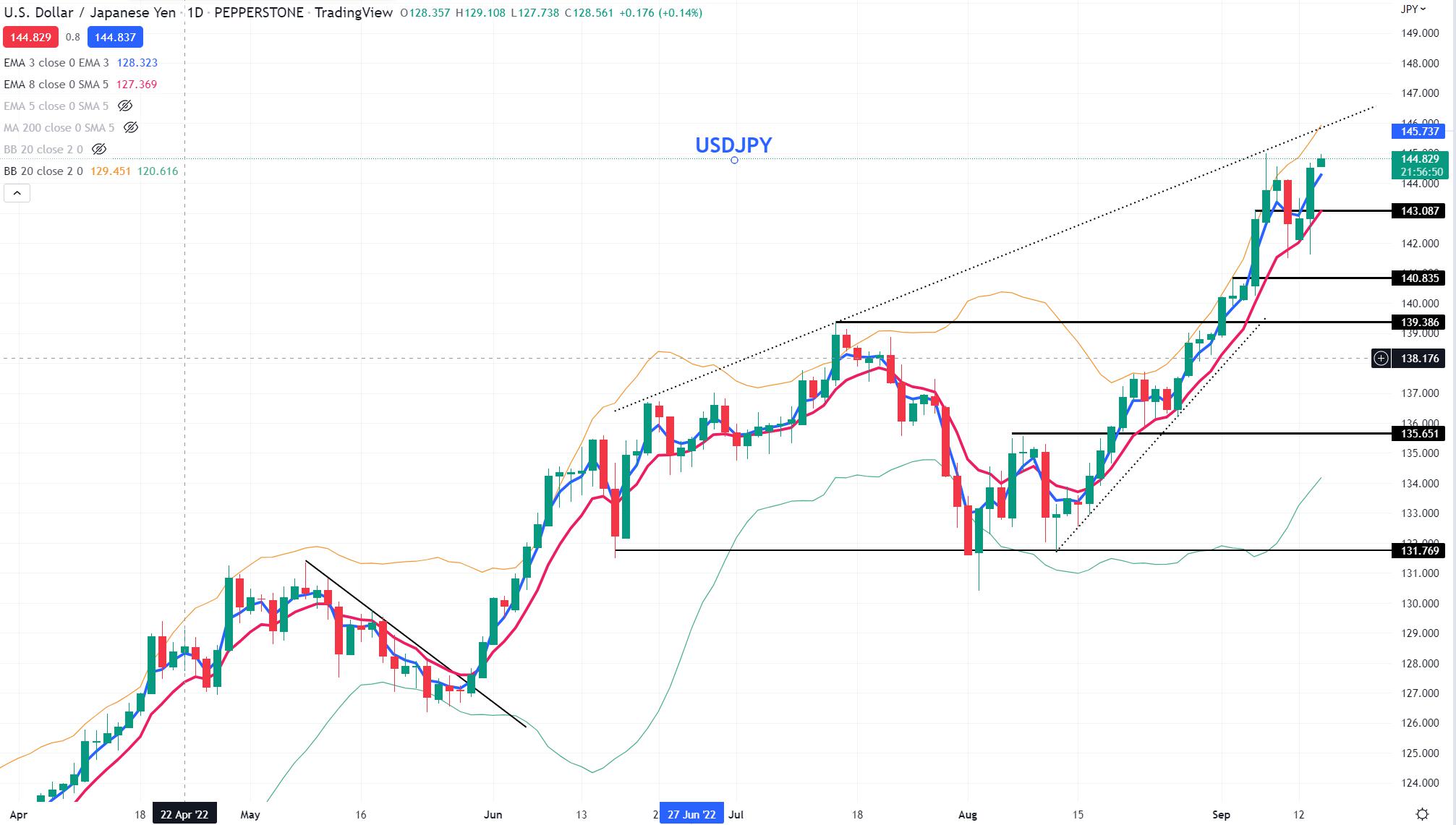- English (UK)
An important change in the markets thinking - volatility incoming

There has been a sentiment shift and the psychology of the market has changed - those positioned for ‘peak inflation’ in the US have had to review, assess, and react to that exposure. There has been a renewed focus away from headline inflation and towards core inflation, which has risen by 40bp to 6.3%. Sticky inflation is on the rise and offers no confidence to the Fed that the recent lift in the fed funds rate is having any effect in reducing price pressures.
Then there is the consideration of a delayed effect of hiking interest rates and the impact on the real economy – this troubles markets, but if the markets are to believe that the Fed truly mean business, which the consensus does, then they have to go hard and that may now mean 100bp of hikes in the September meeting. The prospect of the Fed not just causing a recession because of tightening policy, but actually welcoming a recession has increased a touch – risky assets sense this, as they do a probable decline in reserve liabilities.
One of the most important elements across asset classes was that the US ‘terminal’ rate priced by interest rates (fed funds future) is now above 4.3% - this is the peak or the highest point of where markets are pricing the fed funds rate in the future – in recent months we’ve seen a tight relationship between the USD and the terminal interest rate and as this pushed higher, we’ve seen a scramble for USDs, with the USD having its best day since March 2020. High beta FX has been smashed, with AUDUSD eyeing a re-test of 0.6700. USDJPY stopped just shy of 145 and may get there in the session ahead, while EURUSD is holding below parity.

GBPUSD trades sub 1-.1500 with UK CPI due out at 40m AEST, and that could cause some vol in GBP pairs.
US equities were carted out – there was a positioning adjustment and a buyer’s strike – volatility rose with the VIX index gaining 3.4 vols to 27.3% - this is where short sellers will do their best work and the stars were about as aligned as we have seen for some time. The US500 had its worst day since 11 June 2020, with Apple and Microsoft – the titans of the index - having their worst day since September 2020. After a promising move in precious metals, silver is reversing and we’re seeing big sellers in crypto, homebuilders and semis.
Looking ahead
It feels like this de-risking in the market has further to go and in times like this, we always ask what turns this around, what is the circuit breaker? That, I feel, is not immediately clear as ‘don’t fight the Fed’ means risk heads lower.
It feels like the upcoming economic data won’t matter as much, and with no Fed speakers until the meeting (the Fed are in a blackout period) we’re really in uncharted waters for the next week.
I guess it’s all eyes on articles/headlines from Nick Timiraos (WSJ), who is the Fed’s spokesman – if the Fed want 100bp as our default position he will be the person to preannounce - he has already written the Fed will hike by “at least” 75bp, but will this be ratcheted up to suggest 100bp our default position?
So, lots of uncertainty and right now no readily available answers, with our ability to price risk so challenged, typically this results in volatility. Correct position sizing in this dynamic will keep you in the game.
The material provided here has not been prepared in accordance with legal requirements designed to promote the independence of investment research and as such is considered to be a marketing communication. Whilst it is not subject to any prohibition on dealing ahead of the dissemination of investment research we will not seek to take any advantage before providing it to our clients.
Pepperstone doesn’t represent that the material provided here is accurate, current or complete, and therefore shouldn’t be relied upon as such. The information, whether from a third party or not, isn’t to be considered as a recommendation; or an offer to buy or sell; or the solicitation of an offer to buy or sell any security, financial product or instrument; or to participate in any particular trading strategy. It does not take into account readers’ financial situation or investment objectives. We advise any readers of this content to seek their own advice. Without the approval of Pepperstone, reproduction or redistribution of this information isn’t permitted.
